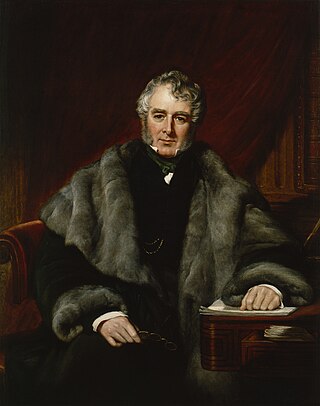
Henry William Lamb, 2nd Viscount Melbourne was a British Whig politician who served as the Home Secretary and twice as the Prime Minister of the United Kingdom.
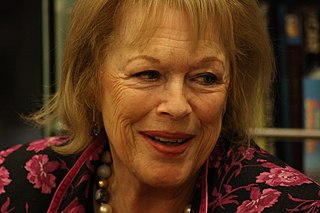
Lady Antonia Margaret Caroline Fraser, is a British author of history, novels, biographies and detective fiction. She is the widow of the 2005 Nobel Laureate in Literature, Harold Pinter (1930–2008), and prior to his death was also known as Lady Antonia Pinter.

Lady Caroline Lamb is a 1972 British epic romantic drama film based on the life of Lady Caroline Lamb, novelist, sometime lover of Lord Byron and wife of politician William Lamb, 2nd Viscount Melbourne. The only film written and directed by Robert Bolt, it starred his wife, Sarah Miles, as Lady Caroline, Jon Finch, Richard Chamberlain, Laurence Olivier, Ralph Richardson, John Mills, Margaret Leighton and Michael Wilding.

Lady Caroline Lamb was an Anglo-Irish aristocrat and novelist, best known for Glenarvon, a Gothic novel. In 1812, she had an affair with Lord Byron, whom she described as "mad, bad, and dangerous to know". Her husband was the Honourable William Lamb, who after her death became 2nd Viscount Melbourne and British prime minister.
This article contains information about the literary events and publications of 1816.

Anna Seward was an English Romantic poet, often called the Swan of Lichfield. She benefited from her father's progressive views on female education.
Lord Ruthven is a fictional character. First appearing in print in 1819, in John William Polidori's "The Vampyre", he was one of the first vampires in English literature. The name Ruthven was taken from Lady Caroline Lamb's Glenarvon (1816), where it was used as an unflattering parody of Lord Byron, while the character was based on Augustus Darvell from Byron's "Fragment of a Novel" (1819). "The Vampyre" was written privately, and published without Polidori's consent, with revisions to the story made by Polidori for an unpublished second edition showing that he planned to change the name from Ruthven to Strongmore. The initial popularity of "The Vampyre" led to the character appearing in many translations and adaptations, including plays and operas, and Ruthven has continued to appear in modern works. The Lord Ruthven Award (1989–present) by the Lord Ruthven Assembly is named after the character.
Henry Colburn was a British publisher.

Sarah Sophia Child Villiers, Countess of Jersey, born Lady Sarah Fane, was an English noblewoman and banker, and through her marriage a member of the Villiers family.

Caroline Pafford Miller was an American novelist. She gathered the folktales, stories, and archaic dialects of the rural communities she visited in her home state of Georgia in the late 1920s and early 1930s, and wove them into her first novel, Lamb in His Bosom, for which she won the Pulitzer Prize for Fiction in 1934, and the French literary award, the Prix Femina Americain in 1935. Her success as the first Georgian winner of the fiction prize inspired Macmillan Publishers to seek out more southern writers, resulting in the discovery of Margaret Mitchell, whose first novel, Gone with the Wind, also won a Pulitzer Prize for Fiction in 1937. Miller's story about the struggles of nineteenth-century south Georgia pioneers found a new readership in 1993 when Lamb in His Bosom was reprinted, one year after her death. In 2007, Miller was inducted into the Georgia Writers Hall of Fame.
Elizabeth Thomas [née Wolferstan] (1771–1855), novelist and poet, is an ambiguous figure. Details of her early life are missing, and her authorship of some of the works attributed to her has been contested due to the use of pseudonyms.
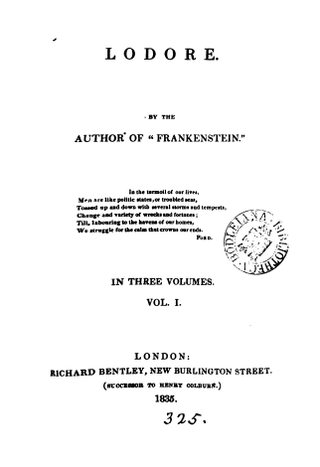
Lodore, also published under the title The Beautiful Widow, is the penultimate novel by Romantic novelist Mary Shelley, completed in 1833 and published in 1835.

The Fox of Glenarvon is a German propaganda film from the Nazi era portraying the years of the Irish fight for independence during World War I. It was produced in 1940 by Max W. Kimmich and starred Olga Chekhova, Karl Ludwig Diehl, Ferdinand Marian and others. The screenplay was written by Wolf Neumeister and Hans Bertram based on a novel of the same title by Nicola Rhon that had been published by the Ullstein publishing house in 1937. It was made at the Johannisthal Studios in Berlin, with sets designed by the art directors Wilhelm Depenau and Otto Erdmann. The shoot lasted from December 1939 to February 1940. It passed censorship on 22 April 1940 and had its debut in Berlin's Ufa-Palast am Zoo two days later.
Glenarvon was Lady Caroline Lamb's first novel. It created a sensation when published on 9 May 1816. Set in the Irish Rebellion of 1798, the book satirized the Whig Holland House circle, while casting a sceptical eye on left-wing politics. Its rakish title character, Lord Glenarvon, is an unflattering depiction of her ex-lover, Lord Byron. In 1866, it was reprinted under the title, The Fatal Passion.

Jane Elizabeth Harley, Countess of Oxford and Countess Mortimer was an English noblewoman, known as a patron of the Reform movement and a lover of Lord Byron.
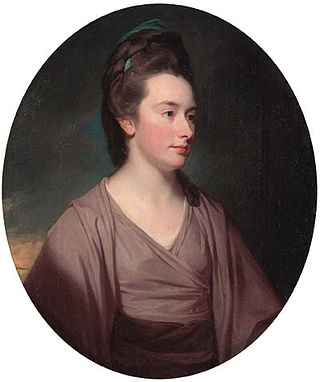
Elizabeth Lamb, Viscountess Melbourne was one of the most influential of the political hostesses of the extended Regency period, and the wife of Whig politician Peniston Lamb, 1st Viscount Melbourne. She was the mother of William Lamb, 2nd Viscount Melbourne, who became Prime Minister of the United Kingdom, and several other influential children. Lady Melbourne was known for her political influence and her friendships and romantic relationships with other members of the English aristocracy, including Georgiana Cavendish, Duchess of Devonshire, Francis Russell, 5th Duke of Bedford, and George, Prince of Wales. Because of her numerous love affairs, the paternity of several of her children is a matter of dispute.
John O'Neill, 1st Viscount O'Neill PC was an Irish politician.
Katherine Thomson (1797–1862) was an English writer, known as a novelist and historian.
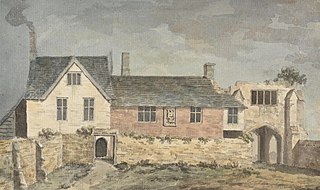
Margaret Minifie was a "a minor eighteenth-century sentimental novelist" whose career has tended to have been overshadowed by that of her sister, Susannah Gunning. A number of Minifie's works have historically been attributed to Gunning but recently, critics have sought to disentangle their two histories.

Ada Reis is an 1823 novel by the British writer Lady Caroline Lamb published in three volumes. It was her third novel and was published by John Murray. It was published six months after her previous work Graham Hamilton.













